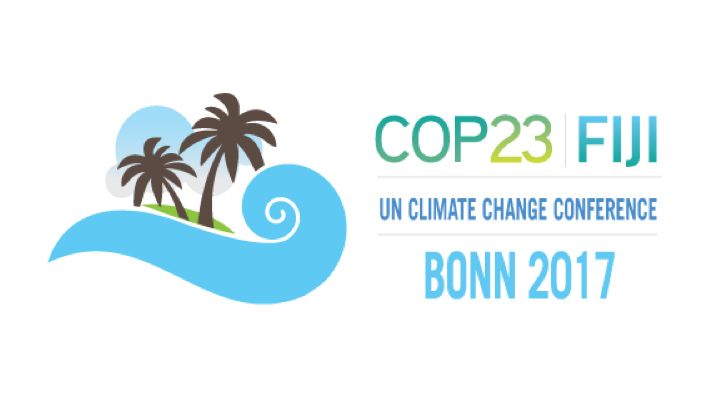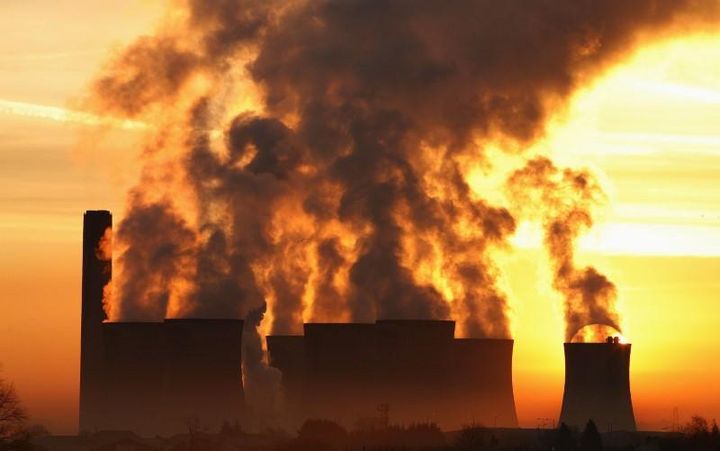
The latest UN Climate Summit, headed for the first time by a threatened island nation (Fiji) and hosted in the former West German capital Bonn, ended over the weekend. The Trump-appointed official U.S. delegation, directed to push coal-fired electricity generation, was largely overshadowed by an alternative American delegation principally led by California Governor Jerry Brown, pioneer of conservation and renewable energy.
Let’s face it. We were already in serious trouble as a society before the election of President Donald Trump. Things had to seriously devolve before something like that, which I began warning about in summer 2015, would ever have been possible. That wonderfully copacetic Obama-transitions-to-Hillary world didn’t really exist.
In reality, we live in a very different world. Challenges abound.
In world politics, what used to be called “foreign policy,” there is tremendous looming conflict on several continents, variously driven by religionism, resource scarcity, rising and insecure power status, sheer sociological complexity, human pigheadedness. In national politics, we are riven by a growing tribalism and anti-intellectualism, and increasingly overtaken by escapist culture. All this takes place in the midst of our technological adolescence as we hope to transition to true civilization, marked by our faltering ability to control both our own tech-amplified destructiveness of once unimaginable weaponry and our own increasingly unequal yet increasingly sprawling and unhealthy prosperity.
And increasingly affecting it all is climate change, the ultimate crosscut issue.
Can we make the transition?
Will we survive, will we evolve to a better day in which our myriad of problems can be effectively addressed? Will our spirit of inquiry and exploration, so necessary for civilizational uplift, survive powerful and savage anti-Enlightenment forces? Will our tendency to amuse ourselves to death distract us from our deepest existential threats?
Will we produce a society of basic human respect, in which the present cascade of systematic sexual harassment and assault would be unthinkable?
Open questions.
Let’s look at some science underlying the existential threat of climate change.
Here is where we are after the latest United Nations Climate Summit, just ended over the weekend in Bonn, Germany. Atmospheric levels of carbon dioxide are the highest they have been in 800,000 years. That includes a 28 percent increase just since 1957 (with seven percent in the past dozen years).
And those levels are going up.
With Trump’s official U.S. delegation bizarrely pushing coal — the U.S. under the Trump Presidency is the only national government on the planet to pull out of the 2015 Paris Accords, and the last two holdouts, Nicaragua (which wanted a more aggressive approach) and Syria (which had been locked in civil war) have just signed on — an alternative American delegation principally led by California Governor Jerry Brown stole the show. But when other national leaders from around the world took the stage, the global climate effort looked to be sputtering in the face of a very daunting reality.
While greenhouse gas emissions have skyrocketed during the spread of industrialization and consumer society across the globe, they have begun to decline in recent years as efforts to fight climate change have increasingly gone online.
Unfortunately, that reversed this year, as emissions increased.
Beyond what might be a momentary hiccup, there are some larger questions.
Is the “airborne fraction” of carbon dioxide emissions now increasing, as some scientists have suggested on and off since the end of the past decade?
How will the melt and subsequent run-off of clean water from polar ice caps affect complex ocean systems, and thus weather patterns? Could rapid climate change be the result?
Were the Paris Accord agreements enough to stave off major climate change?
Taking those questions briefly, the answer on the airborne fraction might be swinging to yes. Much of our increasing carbon dioxide emissions has not been trapped in the form of a heating atmosphere but is instead absorbed in the oceans and in and on the land in the terrestrial biosphere. The “airborne fraction” remained constant since the Industrial Revolution, even as the overall load of carbon in the atmosphere went up dramatically. But the natural “carbon sinks” we have relied on with the oceans and the land may be, as it were, groaning under the load, especially with increasing drought, widespread fire, and the removal of rain forests.
And warmer water absorbs less carbon dioxide, just as sharply diminished ice packs reflect less light. Both are harbingers of more climate change. (The Kilimanjaro glacier retreat has more than doubled since I trekked to the top of Africa's highest mountain in 1975.)
With regard to melting polar ice caps, the increasing infusion of clean water run-off from polar ice into the ocean could have a dramatic effect on natural systems underlying weather patterns.
The history of science, as recounted in a recent Harvard course I took online, tells us that Earth's climate is capable of very abrupt shifts.
As for the actual effect of the 2015 Paris Accords, well, as I wrote at the time, the policy comes up short. The Paris Summit, good as it was after so many wasted years, just wasn't good enough to stave off major effects down the road.
But it was a decent enough start.
At the latest UN climate summit, Trump’s hapless official U.S. delegation was left to promote arguably cleaner forms of fossil fuel power generation, with a bizarre emphasis on coal, the key to the industrial revolution of the century before the last.

Donald Trump says: Let there be ... coal! But the sun rising behind this plant, symbol of industrialism in the 19th century, carries incomparably more power for the future.
With the Trump administration taking up the lone wolf role on the world stage of removing itself from the Paris Accords, other world leaders have been looking to other American leaders with whom to partner, as discussed in this front page Washington Post story over the weekend.
While former Vice President Al Gore remains very prominent, as does former New York Mayor Michael Bloomberg and former California Governor Arnold Schwarzenegger — who just received Germany’s prestigious Bambi Award at the annual ceremony in Berlin for his pathfinding climate work — it is four-term Governor and former presidential candidate Jerry Brown who is at the fore when it comes to American political figures on the world climate stage. Brown both fronts and has expanded upon California's acclaimed climate program. He was the original political champion of conservation, energy efficiency, and renewable energy during his first go-round as California’s governor in the 1970s and ‘80s.
“There is an impression by politicians here that President Trump in person is no longer the voice of the free Western world,” said Christian Ehler in an interview with the Washington Post. Ehler is a leading German Christian Democrat (center-right party) who heads the European Parliament’s delegation for relations with America. He helped put together Brown’s visit to Brussels for a major address and meetings with the European Parliament and other European Union leaders prior to the UN Climate Summit. “We are much more carefully looking now to the diversity of what is being discussed in the United States, and we see that California is one of the powerhouses of the world economically.”
“Give me a place to stand and with a lever I will move the world.”
Archimedes of Syracuse
While the American Presidency is almost always the optimal version of Archimedes’ proverbial fulcrum, the State of California is not a bad substitute.
Brown, also United Nations special advisor for states and regions, already has the global Under2 Coalition of mostly subnational governments, which he continued to grow in Bonn. (United Sub-Nationals? Perhaps the USN ... Or perhaps not.)
And he has the State of California’s Global Climate Action Summit next September in San Francisco, co-chaired by UN Framework Convention on Climate Change chief Patricia Espinosa, Indian industrialist Anand Mahindra, and Michael Bloomberg, who is also a UN special envoy and came to California in 2006 to study climate and renewable energy issues with the Schwarzenegger administration before enacting a program in New York City.
Both Brown’s coalition and summit build on Schwarzenegger’s three Governors’ Global Climate Summits, also organized in affiliation with the UN.
In addition, Brown has the growing U.S. Climate Alliance of states, organized with Washington Governor Jay Inslee, New York Governor Andrew Cuomo, and Oregon Governor Kate Brown.
With Trump intransigent/irrelevant in the White House, the leaders of Canada and Mexico went ahead and signed an agreement to work with the U.S. Climate Alliance.
Brown also has America’s Pledge, co-chaired with Bloomberg, bringing in cities and other players.
And Brown just this month convened an assemblage of the leaders of national academies of science from around the world during a visit to Oslo, Norway.
It does not take an enormous amount of imagination to see how all this can coalesce into a de facto national climate ministry, a de facto continental climate ministry, a de facto world climate ministry, taking strong advocacy stands, campaigning in ways that the UN can’t and the U.S. won’t.
But would it be enough?
Facebook comments are closed on this article.